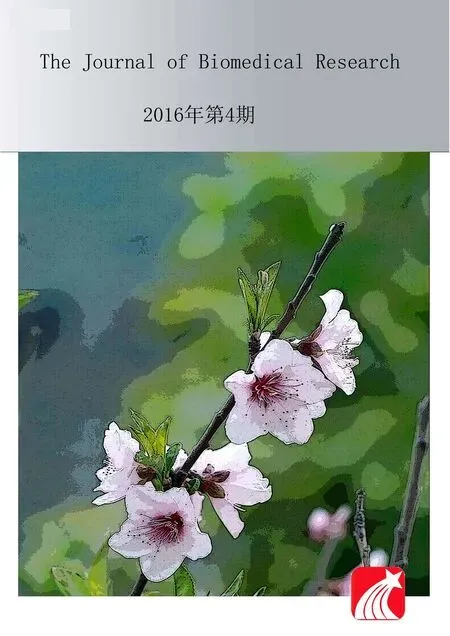Myocardial bridge and proximal stenosis in hypertensive patients
Myocardial bridge and proximal stenosis in hypertensive patients
Dear Editor:
A myocardial bridge is an abnormality in which the artery is covered by a superficial membranous bridge, or a deep muscular bridge[1]. It is most commonly found in the left anterior descending coronary artery (LAD). The affected artery is stenosed by the surrounding myocardium, especially in the deep bridge as the artery is situated deep in the myocardium[2]. Atherosclerosis is usually present in the artery proximal to the bridge while the bridge, or tunnel, and the distal artery are free of atherosclerosis[3]. This study intended to examine whether myocardial bridge correlated with the development of atherosclerosis in hypertensive patients.
We retrospectively analyzed the clinical and radiological data of 107 hypertensive patients with myocardial bridge and stenosed coronary arteries. The study protocol was approved by the ethics committee of the authors’ affiliated institution. Stenosis was categorized as follows: type 1, <50% stenosis; type 2, 50%-75% stenosis; type 3, >75% stenosis. Sixty-eight (63.5%) were males and the mean age was 63.9±13.0 years. Fiftytwo (48.5%) patients had stage 1 hypertension, and 55 (51.4%) patients had stage 2 hypertension. Thirtytwo (35.5%) patients had type 2 stenosis. LAD was the most common branch with a myocardial bridge. Sixty-nine (64.4%) had superficial bridge with a mean length of 10.26 mm. Thirty-eight patients (35.5%) had deep bridge. Pearson correlation analysis found no significant correlation between superficial bridge and proximal stenosis in hypertensive patients (P>0.993). There was also no significant correlation between deep bridges and proximal stenosis in hypertensive patients (P>0.580). In a Chinese study of 179 patients, 40.8% were found to have stenosis in the proximal part of the bridge[4], but in our study, 76.4% (107 out of 140) of patients had stenosis in the proximal part of the bridge. The difference may be due to the presence of hypertension in and a higher mean age of our patients. The arterial pressure is increased in the artery proximal to the bridge and the blood flow pattern also changes. These factors, in turn, could cause tension on the arterial intima and may cause or worsen preexisting atherosclerosis[5]. Though hypertension is one of the factors for the formation of atherosclerosis, it is not the direct cause for stenosis in patients with myocardial bridge. We found no correlation between myocardial bridge and stenosis of the proximal artery in hypertensive patients. This finding, however, needs to be further confirmed by additional studies involving more patients.
Yours Sincerely,
Gousea Mohimuddin, Xindao Yin, Hui Xu
Department of Radiology,
Nanjing First Hospital Affiliated to Nanjing Medical
University,
Nanjing, Jiangsu 210029,
China.
[1] Moehlenkamp S, Hort W, Ge J, et al. Update on myocardial bridging[J].Circulation, 2002, 106(20): 2616-2622.
[2] Juilliere Y, Berder V, Suty-Selton C, et al. Isolated myocardial bridges with angiographic milking of the left anterior descending artery: a long-term follow-up study[J].AmHeart J, 1995, 129(4): 663-665.
[3] Masuda T, Ishikawa Y, Akasaka Y, et al. The effect of myocardial bridging of the coronary artery on vasoactive agents and atherosclerosis localization[J].J Pathol, 2001, 193(3):408-441.
[4] Ishii T, Asuwa N, Masuda S, et al. The effects of a myocardial bridge on coronary atherosclerosis and ischaemia[J].J Pathol, 1998, 185(1): 4-9.
[5] Ge J, Jeremias A, Rupp A, Abels M, Baumgart D, Liu F et al. New signs characteristic of myocardial bridging demonstrated by intra-coronary ultrasound and Doppler[J].Eur Heart J, 1999, 20(23): 1707-1716.
Received 19 June 2014, Accepted 25 August 2014, Epub 10 October 2014
R714.252, Document code: B
The authors reported no conflict of interests.
© 2016 by the Journal of Biomedical Research. All rights reserved.
10.7555/JBR.30.20140082
 THE JOURNAL OF BIOMEDICAL RESEARCH2016年4期
THE JOURNAL OF BIOMEDICAL RESEARCH2016年4期
- THE JOURNAL OF BIOMEDICAL RESEARCH的其它文章
- Internal carotid artery agenesis with stenosed intercavernous anastomosis: a case report
- Fenmented rice bran prevents atopic dermatitis in DNCB-treated NC/Nga rnice
- Identification of lineariifolianoid A as a novel dual NFAT1 and MDM2 inhibitor for human cancer therapy
- Pharmacologicai advantages of melatonin in immunosence by improving activity of T lymphocyfes
- Immunogenicity and protective efficacy of DNA vaccine against visceral leishmaniasis in BALB/c mice
- Characerization cfintegrons and novel cassette arrays in bacteria from clinical isloates in china,2000-2014
